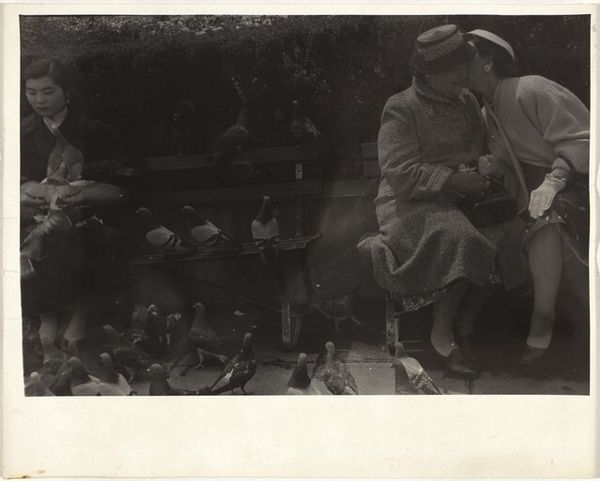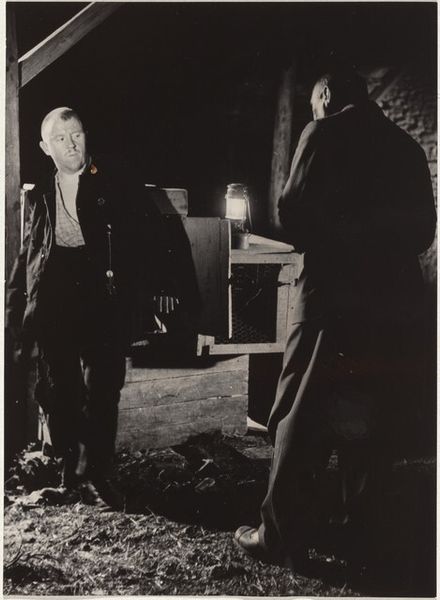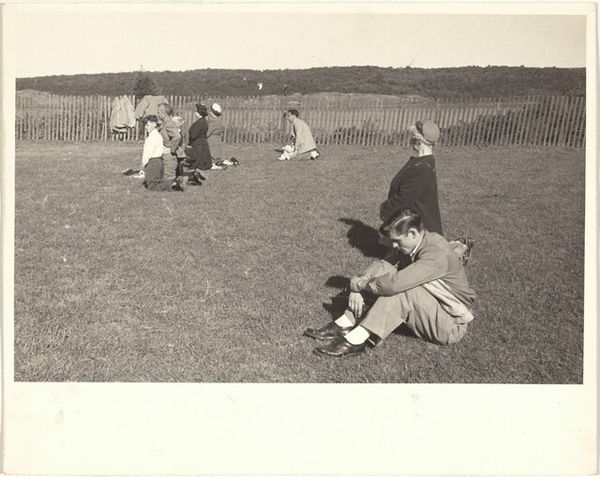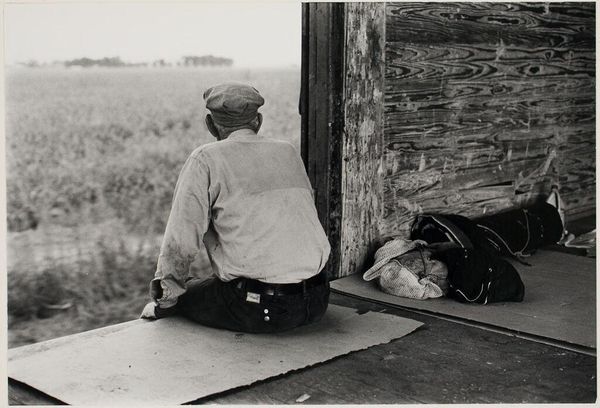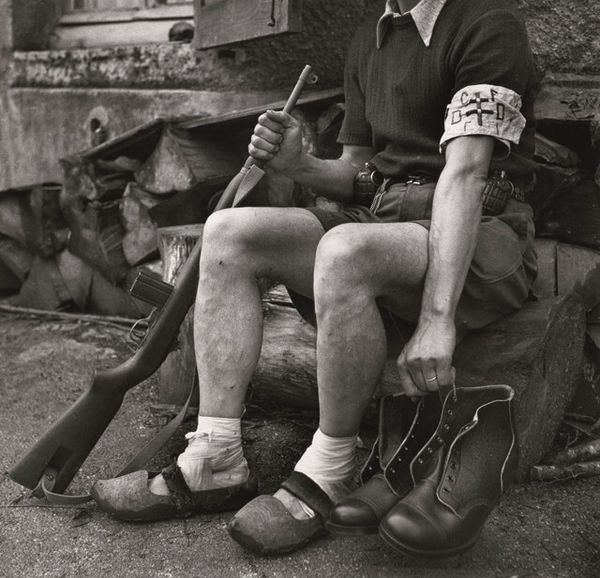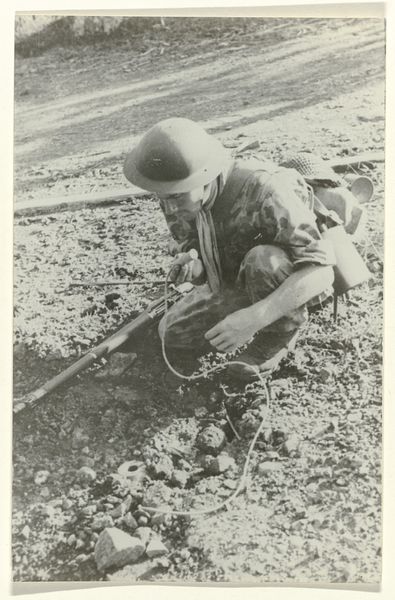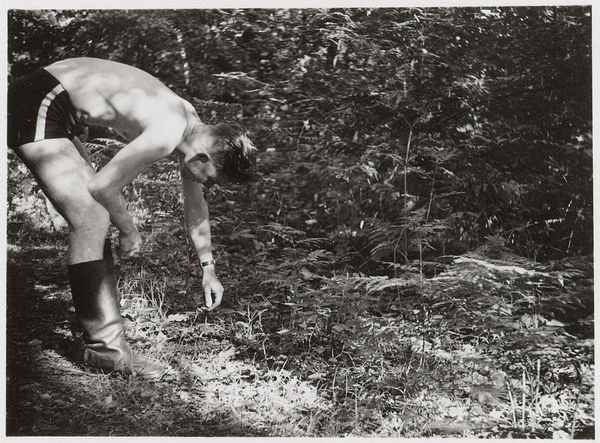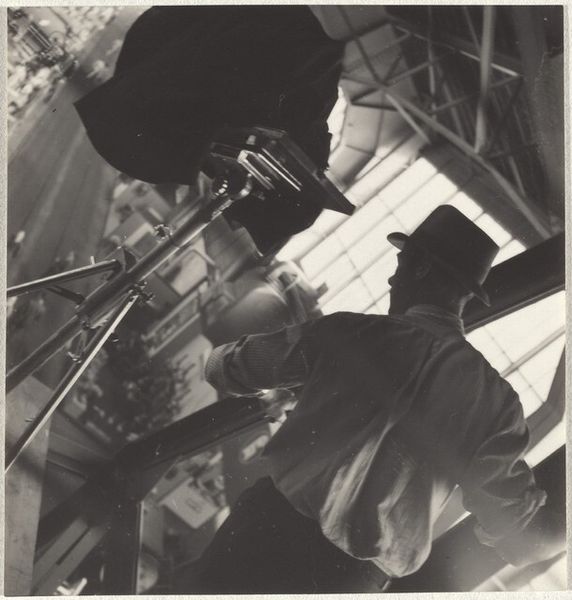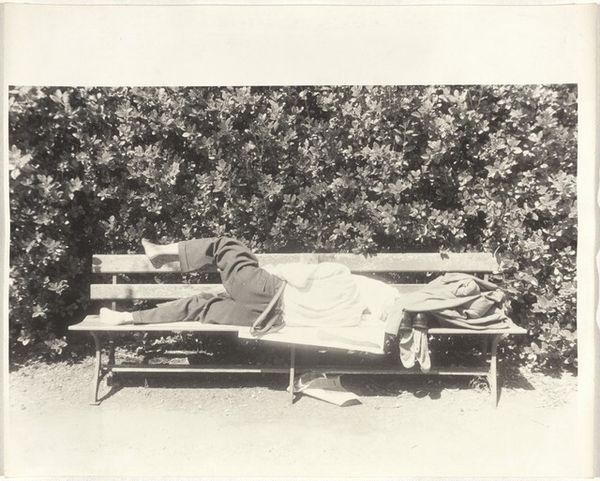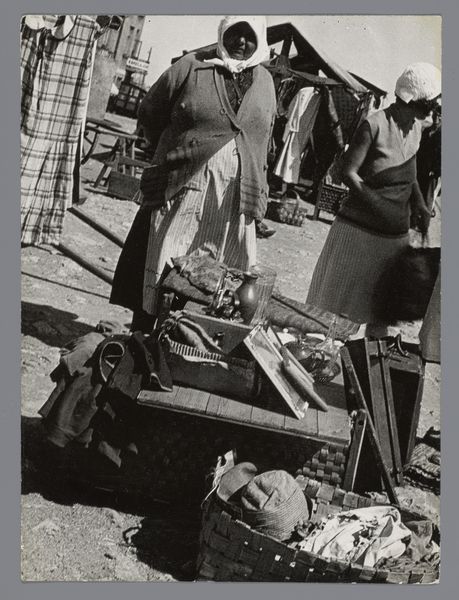
photography, gelatin-silver-print
#
portrait
#
archive photography
#
photography
#
historical photography
#
gelatin-silver-print
#
genre-painting
Dimensions: image: 17.8 x 12.4 cm (7 x 4 7/8 in.) sheet: 18 x 12.6 cm (7 1/16 x 4 15/16 in.)
Copyright: National Gallery of Art: CC0 1.0
Curator: This gelatin-silver print, “Actors on break--Filming "Steibruch"”, was captured by Robert Frank in 1942. It strikes me as an unusually intimate backstage glimpse. What's your first impression? Editor: Well, immediately I see a certain contrast between the rough, almost vulgar figure of the man drinking and the more restrained demeanor of his companion. It speaks volumes about the hierarchies at play, even during a break. Curator: It's intriguing how Frank captured this seeming candid moment of actors between takes. Considering this was wartime, how do you think the conditions of its making influenced what he chose to capture, what kind of statement he wanted to create through the genre painting of two men off work? Editor: Absolutely. Think about the rationing of materials, the use of photography itself as propaganda, and who controlled the narratives. These choices reflect a kind of quiet rebellion through subject matter. The emphasis here is on rest, yet work looms. Note also the rough cart behind them-- suggesting transportation of goods or materials at that time. It brings into view those on the margins and essential labor, which isn't typical subject of much photography at the time. Curator: Indeed, Frank subtly redirects attention toward the daily lives of the working class and challenges expectations. Considering this genre painting style, there's the historical weight of its context too. Editor: Right, understanding what roles institutions like film studios played in creating and shaping public perceptions during wartime is key. How much autonomy did a photographer have? Who was the intended audience? Were there particular ideological goals these artworks had to advance at that time? Curator: Good questions to reflect on. It really gives us insights on material and societal pressures that influenced its production and why Robert Frank took that shot and considered it something worthy. Editor: It underscores that any study of art has to contend with the power dynamics that structure its creation and reception and reflect them for analysis of that piece and other pieces that could be linked within the same context. Thanks for sharing!
Comments
No comments
Be the first to comment and join the conversation on the ultimate creative platform.
